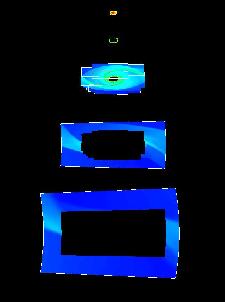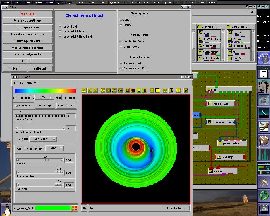Description: In this simulation the process of tidal gap formation in a protoplanetary disk is followed. The disk rotates around a Sun-like star, and its original mass is equal to 20 Jupiter masses. A protoplanet two times more massive than Jupiter is inserted into it at the begining of calculations. The orbital radius of the planet is equal to 0.4 of the outer radius of the disk. The simulation was performed without any explicit viscosity (the only viscosity influencing the evolution was the internal viscosity of the numerical scheme). Tidal gap formation may put a natural limit to the growth of the protoplanet, and as such it may be one of the fundamental processes responsible for the origin of planetary systems. This possibility is presently investigated by research groups in Germany, USA , Sweden and Poland.
Code: Second order upwind (ZEUS-like), written by G.Laughlin and M.Rozyczka. Grid 128x128.
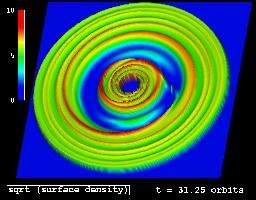 Gas
density
Gas
density
High quality (512x400, 24 bpp) mpeg(18.7M)
Good quality (512x400, 24 bpp) mpeg(10.1M)
Description: A problem of mass flow in the immediate vicinity of a planet embedded in a protoplanetary disk is studied numerically in two dimensions. Large differences in temporal and spatial scales involved suggest that a specialized discretization method for solution of hydrodynamical equations may offer great savings in computational resources, and can make extensive parameter studies feasible. Preliminary results obtained with help of Adaptive Mesh Refinement technique and high-order explicit Eulerian solver are presented. This combination of numerical techniques appears to be an excellent tool which allows for direct simulations of mass flow in vicinity of the accretor at moderate computational cost. In particular, it is possible to resolve the surface of the planet and to model the process of planet growth with minimal set of assumptions. Some issues related to visualization of the results and future prospects are discussed briefly.
Code: AMRA
Paper: astro-ph/0002029
Figures:
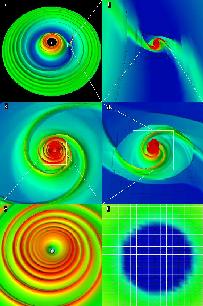 Zooming around protoplanet - fig. 2
Zooming around protoplanet - fig. 2
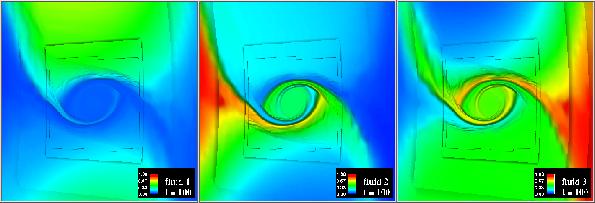 Tracers after 100 orbits. This picture shows that 60% of mass accreted by planet comes from the outer part of the disk and 40% from the inner disk. There is almost no accretion from the gap.
Tracers after 100 orbits. This picture shows that 60% of mass accreted by planet comes from the outer part of the disk and 40% from the inner disk. There is almost no accretion from the gap.
Mpeg movie showing zooming from the whole disk to the planet's surface.
